Physarum: a plasmodial slime mold
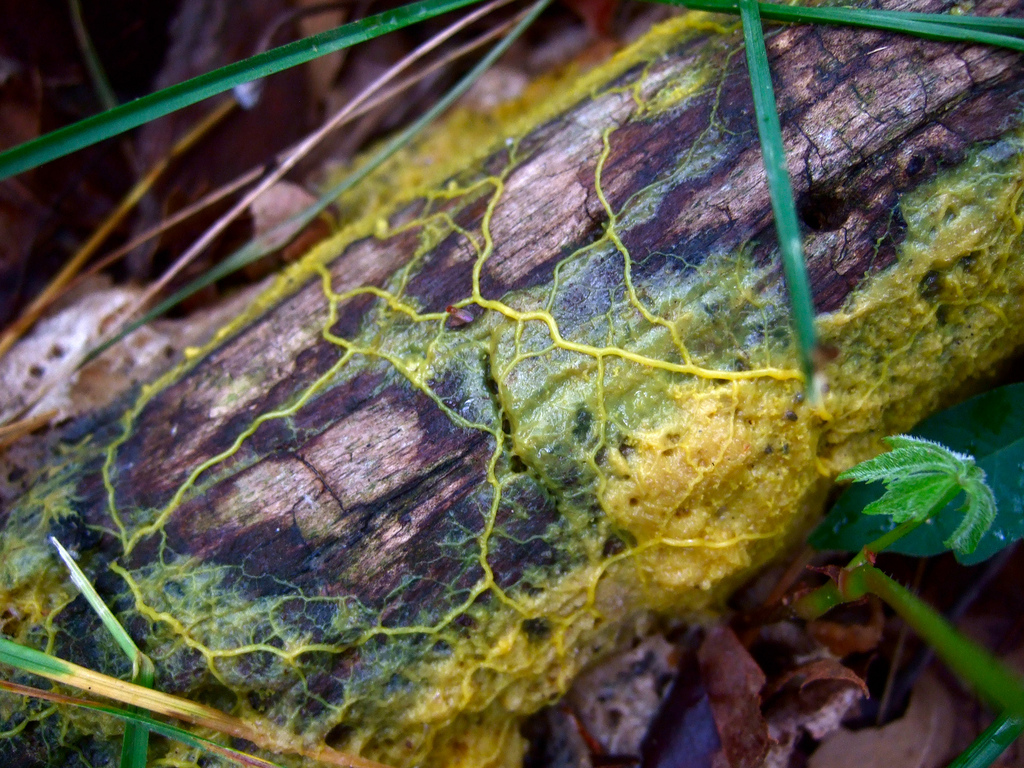
Physarum: a plasmodial slime mold
Physarum is a member of a group that is unfamiliar (to most) but whose members are actually relatively common. They can commonly seen on mulch used in landscaping and occur as a large thin, amorphous ‘blob’ of yellow or cream colored material that usually hardens in a day or two. They also are commonly found on decaying wood in the forest.
Phylogeny and taxonomy
Since they are heterotrophic, mobile and (generally) unicellular they used to be considered ‘protozoa’; other early treatments put them with fungi because they produce spores and fruiting bodies. Like a number of other ‘misfit’ groups, the plasmodial slime molds can be placed in the Protist kingdom, a heterogenous assemblage of eukaryotic groups that do not readily fall with animals, plants or fungi. In certain stages plasmodial slime molds look like a giant, multinucleate amoebae and they are sometimes grouped with other similar looking things (including the amoebae often seen in introductory biology classes, as well as cellular slime molds (see Dictyostelium) in a group that may be called the Amoebazoa. However, looks can be deceiving and apparently not all amoebae-like things belong (phylogenetically) together, i.e. amoeboid ‘looks’ evolved more than once and a group with all amoebae-like things (e.g. the Rhizopoda) is paraphyletic (i.e. grouping together organisms with different origins). Consequently, the Amoebazoa does not include all amoebae-like things.

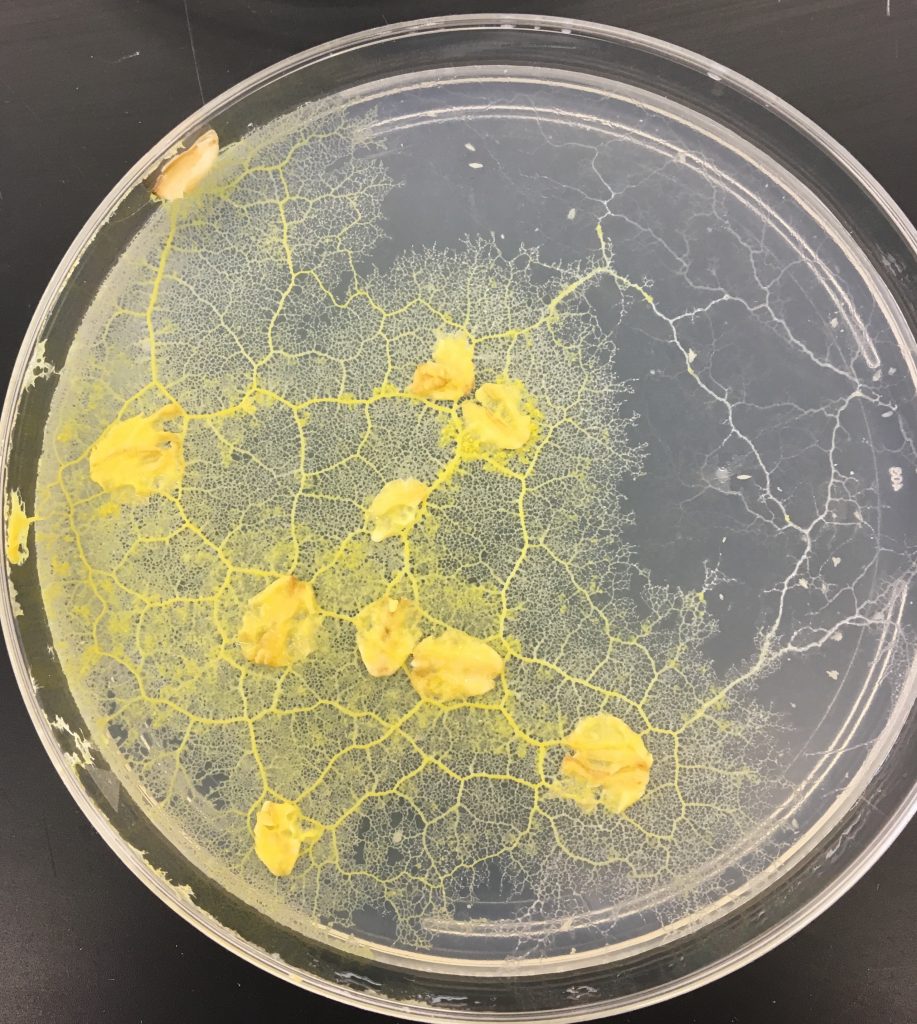
Structure
Physarum is eukaryotic and is capable of ingesting material by phagocytosis. The cells are multinucleate (coenocytic), forming a thin film called a plasmodium that spreads across its substrate, often with visible branching channels occurring within the structure. They often can become several centimeters in size, flowing over a substrate (soil, leaves, branches or logs. They exhibit an easily seen (with a hand lens or dissecting scope) cytoplasmic streaming, the result of the interaction of motor proteins with microfilaments (actin filaments). Their normal food is bacteria or other minute organisms. They also can live off of dead organic matter (e.g. oatmeal, which is often used to feed it in the laboratory). Under adverse conditions the cytosol thickens and dries out forming a structure called a sclerotia that can survive in an inactive state for a prolonged period.
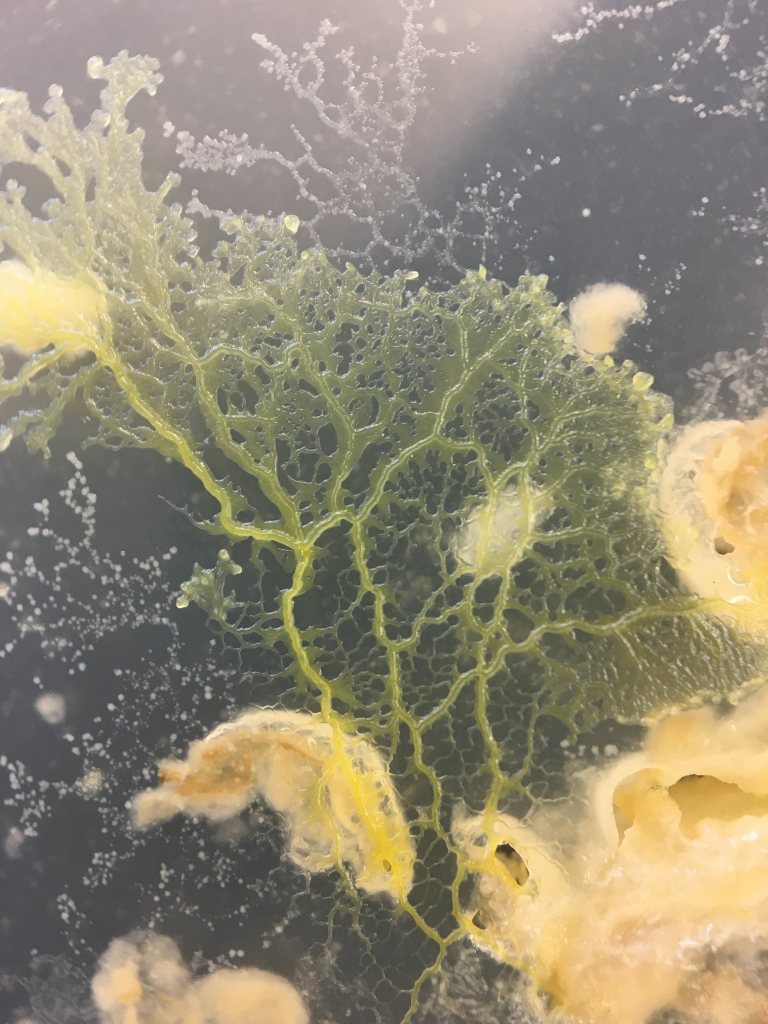
Reproduction
The large cell often reproduces by fragmentation, which can also happen with the dried sclerotia. The plasmodium can also dramatically transform from a blob of cytoplasm to a rigid structure consisting of numerous sporangia, often stalked structures with a round capsule (sporangium) at their top, in which are formed haploid spores created as the result of a meiotic cell division that occurs in the developing sporangium. The spores are dispersed and, when they germinate, form uninucleate amoeboid (haploid) cells that grow and divide and can develop, also lose, a flagellum. At some point some of these cells are capable of fusing with each other and having their nuclei also fuse. This diploid cell is capable of growing and forming a large, multinucleate cell, the plasmodium.
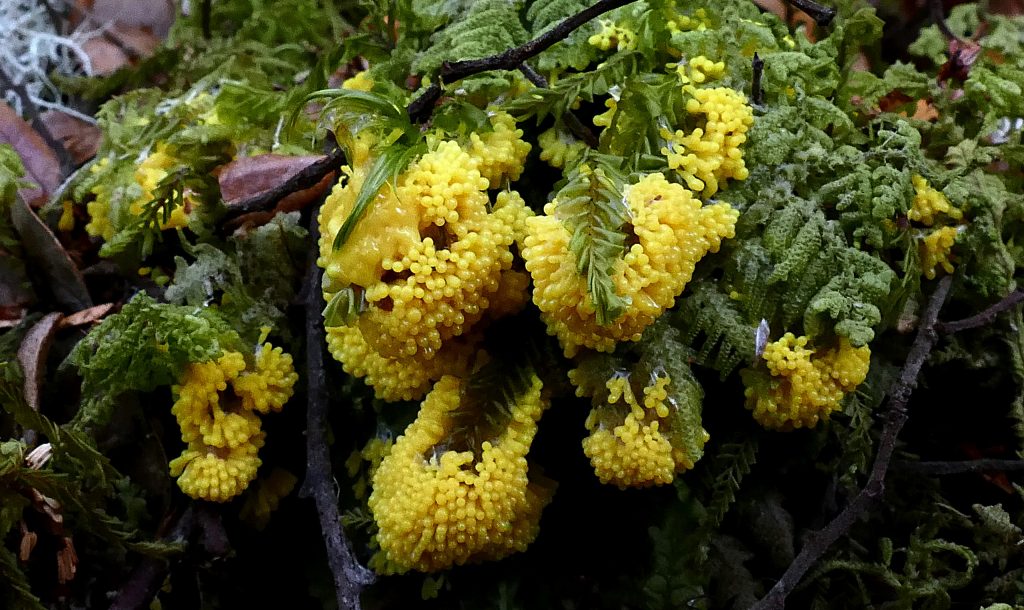
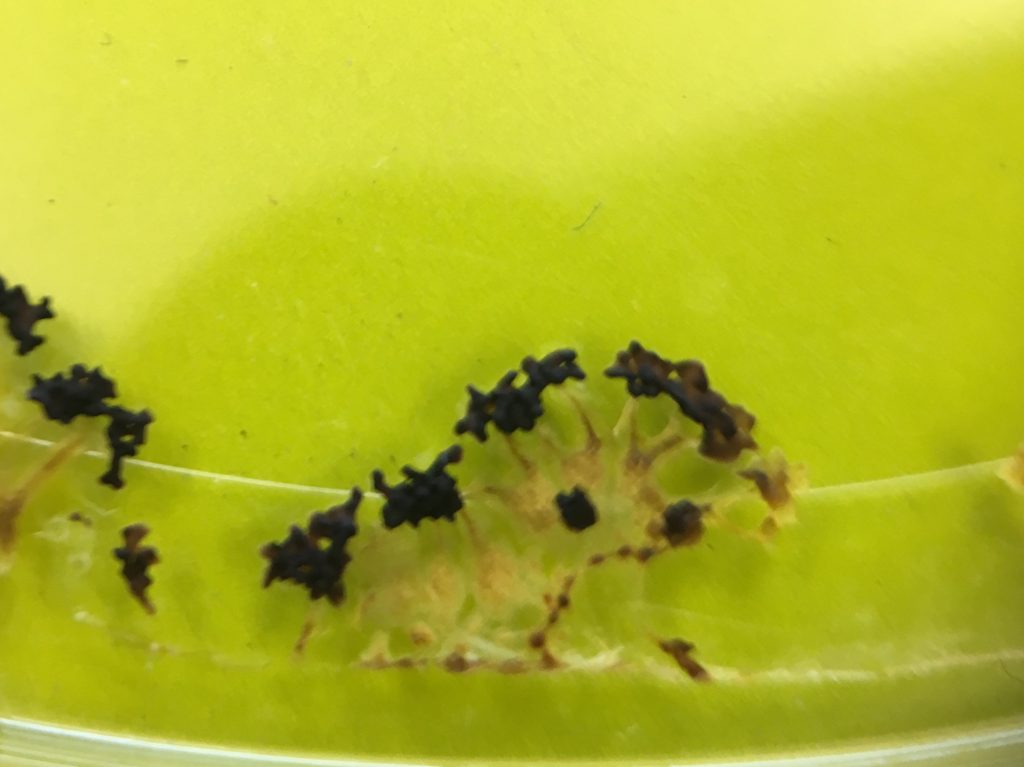
Matter and Energy
Physarum is both predatory heterotroph, capturing (by phagocytosis) other living organisms (primarily bacteria) and also a saprophyte, feeding on dead organic material. In either case they break down their food’s biomolecules into simple sugars, amino acids, etc. and reform them into their own biomolecules. That is, they are typical heterotrophs.
Interactions
Plasmodial slime molds interact in a trophic manner with their prey and with organisms that eat them (either the plasmodium or the spores). They need moist conditions to grow and changes in their growth pattern (spore germination, formation of sporangia and sclerotia) are triggered by environmental conditions.
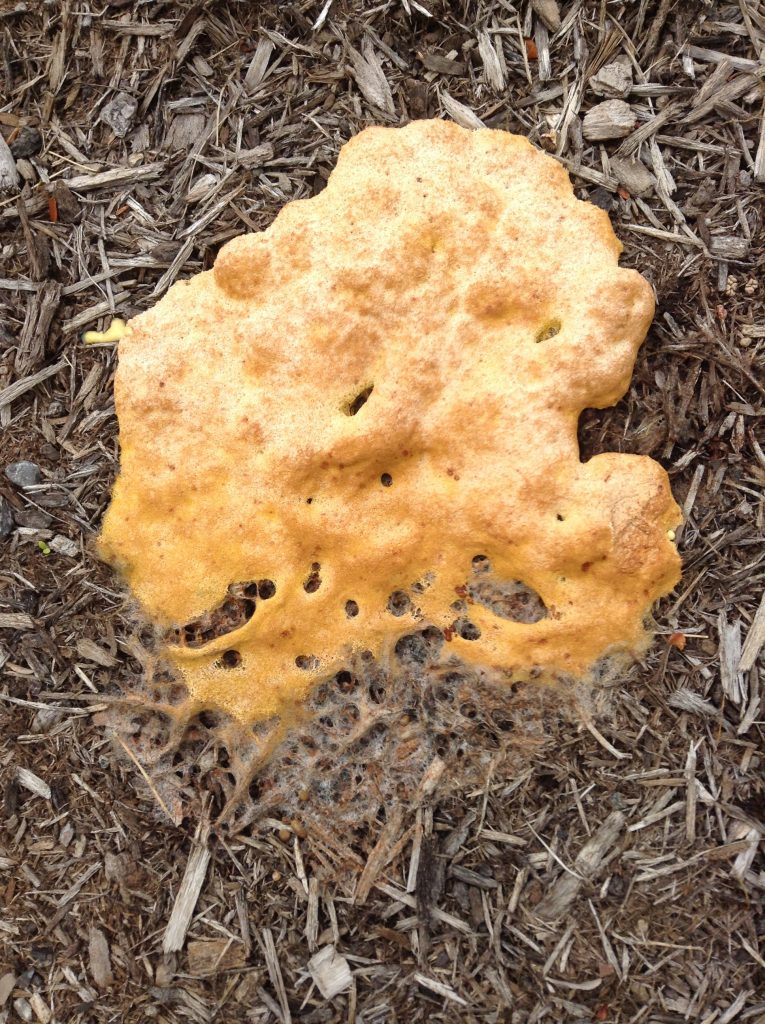
Further Reading
Plasmodial slime molds have been shown to be capable of a type of ‘reasoning’ (depending upon how one defines it–see the first link. In addition to the links listed below, YouTube also has several excellent videos of slime molds.
- “Brainless Slime Mold Physarum polycephalum Shows Intelligence”
- scitechdaily.com/brainless-slime-mold-physarum-polycephalum-shows-intelligence
- “Life Cycle of Physarum polycephalum”
- https://web.archive.org/web/20230610010541/http://www.educationalassistance.org/Physarum/LifeCycle.html
- Hunting Slime Molds
- https://www.smithsonianmag.com/science-nature/hunting-slime-molds-38805499/
- “Life Cycle of Physarum”
- http://www.biologydiscussion.com/fungi/life-cycle-of-physarum-with-diagram-fungi/63114
Media Attributions
- Physarum polycephalum © frankenstoen is licensed under a CC BY (Attribution) license
- Slime mould © Bernard Spragg is licensed under a Public Domain license

